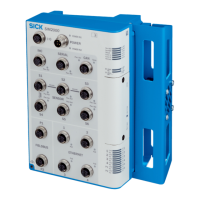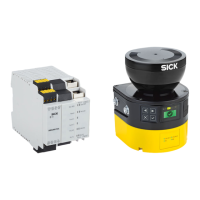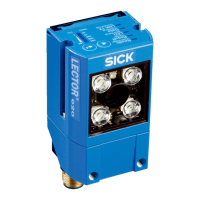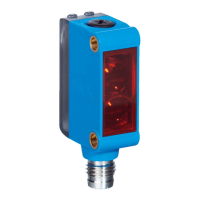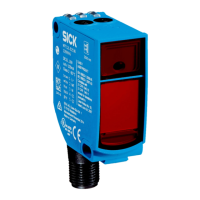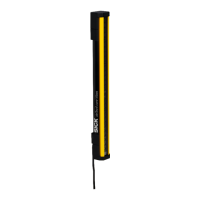4.3.6 Extension of the protective field when influenced by retroreflectors or headlights
Important information
WARNING
Ine
ffectiveness of the protective device
Strong retroreflectors or spotlights in the detection zone can interfere with the device
and thereby impair detection.
b
From a distance of the configured protective fields of 1.5m in the Z direction and
the occurrence of strong spotlights or retroreflectors in the detection zone, the
vertical extension of the configured protective fields must be at least 70cm.
4.3.7 Timing for monitoring case switching
Overview
If y
ou switch between monitoring cases, you must specify the time at which the switch‐
over takes place.
When determining the time, you must consider the following points, among others:
•
At the time of switchover, one person can already be in the newly activated
protective field. The new protective field must therefore be active in good time so
that the device detects a person in the newly activated protective field before a
hazard arises there.
•
In some cases, the process of switching between monitoring cases takes so long
that the new monitoring case is not available inside the response time provided.
This means that it may not be possible to detect a person in the protective field in
time. In cases like this, you must start switching between monitoring cases earlier.
The following parameters influence the duration of the process:
°
Set input delay
°
Processing time for the chosen input
•
In addition to the parameters considered below, the switching signal’s propagation
delay time up to the device must also be taken into account. Depending on the
communication protocol, these include the network cycle time and the processing
time of a controller, for example.
Approach
1.
Calculate how long it takes to switch between monitoring cases:
t
CSR
= t
ID
+ t
I
°
t
C
SR
= time required for switching between monitoring cases in milliseconds
(ms)
°
t
ID
= input delay for the control inputs, in milliseconds (ms)
°
t
I
= processing time for the selected switching type in milliseconds (ms)
•
Local static control input: t
I
= 12ms
2. Calculate how much time is available in the response time for switching between
monitoring cases:
t
C
SA
= (n – n
CS
) × t
S
°
t
C
SA
= time available for switching between monitoring cases in milliseconds
(ms)
°
n = Multiple sampling setting (default: n = 2)
°
n
CS
= Multiple sampling after monitoring case switching for the setting Fast
(default): n
CS
= 1, for the setting Robust: n
CS
= n – 1 (for n = 1, n
CS
= 1), for
the setting User defined: n
CS
≤ n – 1 (for n = 1, n
CS
= 1)
°
t
S
= Duration of an image acquisition cycle in milliseconds (ms)
4 P
ROJECT PLANNING
26
O P E R A T I N G I N S T R U C T I O N S | safeVisionary2 8025919/1I9E/2023-01-09 | SICK
Subject to change without notice
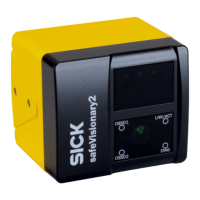
